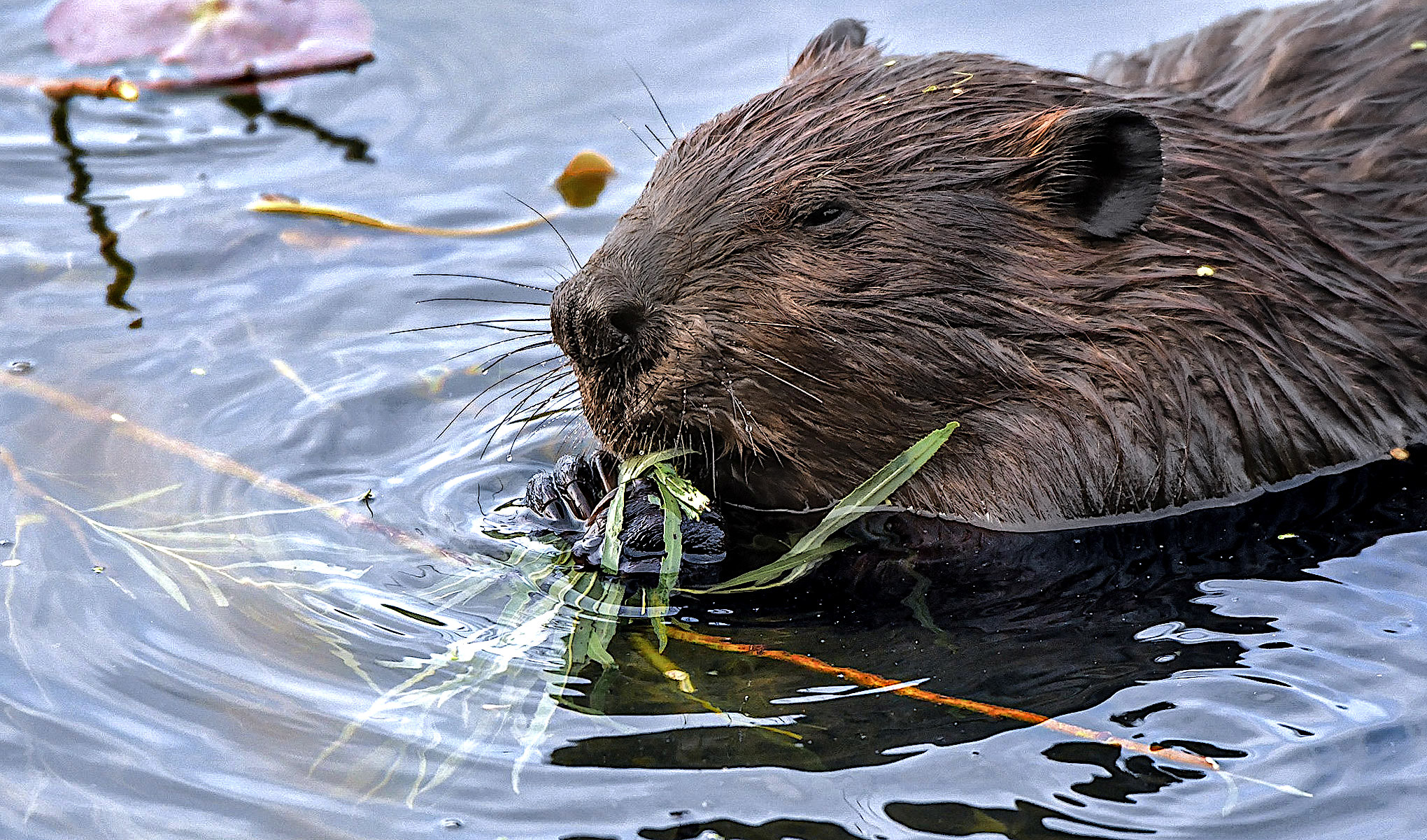
4 minute read
Saying Y.E.S. to Nature
Leave It to Beavers
BY PAMELA WALKER
There are many strange facts about beavers that we Canadians should know … just because.
No one has probably seen a nickel lately, but the nation’s animal has graced the coin since 1937.
Beavers are known mostly for their logging expertise. They can fell a five inch-diameter tree in just three minutes, according to Frontenac News.
Their four large incisors remain sharp and strong their whole lives due to two important features: one, the teeth keep growing throughout their lives; and two, they contain large amounts of iron,

which makes the colour of their teeth a rather unsightly yellow, but keeps them from breaking, even when chewing on hard woods such as arbutus and Garry oak.
Beavers use the felled trees in many ways. Firstly, to eat: they strip the bark to get to the sugary-sweet cambium layer underneath, which feeds carbohydrates to the branches and leaves. Secondly, they use the tree as a building material, along with mud, for their houses. Two room affairs, these dens or lodges are built with precision and care. They sport two discrete entrances, front and rear; beautiful wooden floors and walls; and a high, domed ceiling. Designed to keep the cold out and the air circulating, their dens have an open-concept living room/ dining room and, off to the side, a cozy bedroom that can double as a nursery in the spring. Woodchips grace the floors providing a soft — and edible! — layer of comfort.
Thirdly, beavers use the felled trees to create amazing dams, and dams create ponds. Having a pond in one’s yard — whatever the size — is a very good thing, indeed. So, if you can, hire a beaver. You won’t regret it.
As summers keep getting dryer and dryer, no one needs water more than those who do not have the luxury of taps sinks and tubs. Of course, I am referring to birds, butter flies, bats, beetles, frogs, and many more. When it hasn’t rained in days, providing water for fauna is a very nice thing to do. It doesn’t have to be that complicated.
Here are some ideas:
• Purchase a birdbath. Make sure it has a raised surface in the middle so butter flies and hover flies can imbibe safely. Clean it out and replace the water often so as not to create a grow-your own mosquito lab.
• Sink an old children’s paddling pool into the ground and put a small fish tank bubbler in it. Get one at a pet store, garden centre or hardware store for about $30. Fill the pool with water and some pretty water plants. Sink a large rock or stick close to the edge so that insects are able to crawl to safety should they fall in. Otherwise, install a sign that says, “No Lifeguard on Duty.”
• Buy some pond liner and dig a hole in the ground. A kidney-shaped hole with a sunken living room in the middle adds to the depth and to the aesthetics. Secure the liner down with rocks—flat ones for the topsides and round ones for the second level. Fill it with water and a bubbler or solar fountain and stand back. A trail cam might detect nocturnal visitors.
• Hire a landscape architect to design and install a fancy pond with a flowing brook and a Monet-inspired bridge across it. It will bring you and the nature that visits no end of joy. Make it big enough so you can have fish to feed and breed. Add a bench to sit on and gaze at the to-ing and fro-ing that will occur within a few days of installation.
• Hire a beaver to stop the run-off that naturally flows onto your property. Give her a forest from which to choose materials. Spy quietly on these shy creatures as they swim effortlessly across the pond that will be created. If you hear a loud slap on the water, they are probably warning other beavers that you are spying. Or perhaps they are clapping, giving thanks for you caring about all creatures great and small.




